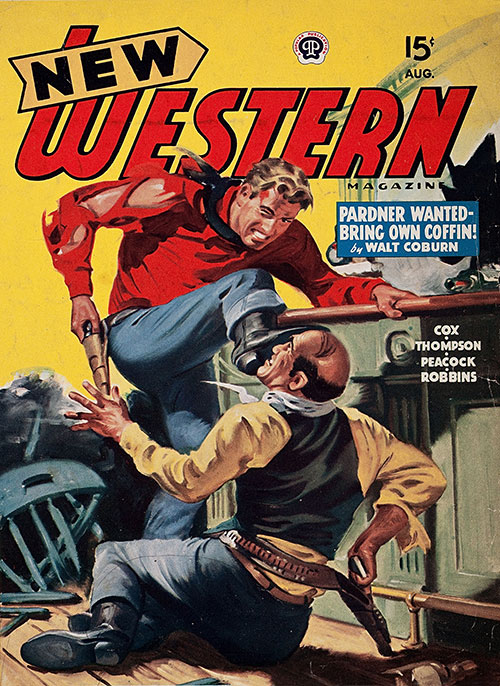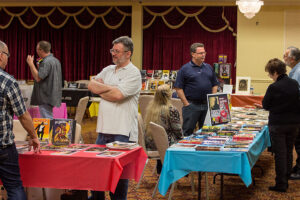
I don’t write much about the western pulp genre. While I enjoy a good movie western, I haven’t had the urge to read much in the way of western fiction.
But that doesn’t prevent me from enjoying the Great Pulp Art that graced the covers of the western pulps.
Western-themed pulps were certainly popular. There were over 165 different pulp titles in print between 1919 (when Street & Smith‘s Western Story Magazine debuted) and the end of the pulp era in the late 1950s (though some titles, particularly Ranch Romances, continued through the 1960s).
Their peak years were between 1937 and 1941 (when 51 to 56 different western pulps were on the newsstands each year), with another peak in 1949 and ’50 (when the number of titles shot up to 54 and 60 respectively in those years).
One frequent contributor to the western pulps was Sam Cherry. His artwork jumped out at prospective buyers from the covers of Blue Ribbon Western, Rodeo Romances, Star Western, Texas Rangers, 10-Story Western, Thrilling Western, West and many others.
Our latest entry in the Great Pulp Art series comes from the August 1947 number of New Western Magazine. The Popular Publications pulp ran from 1934 to 1954, with a hiatus in 1938 and ’39.

Cherry’s cover is pure pulp action — just what you’d expect to see with a western whether it was the cover of a pulp or on the silver screen. Our hero (in requisite red shirt to grab the buyer’s attention) is getting the best of the bad guy during a saloon brawl.
The background is only hinted at; the front of the bar, a broken chair and a broken mirror are about it. The focus is on the fight. In fact, there’s little else to draw your eye away from the action. The cover only features the magazine’s logo, a small boxed blurb for the Walt Coburn story, and a small listing of four other author names.
Your eye goes right to the two men.
Cherry’s characters have depth, energy and realism, more so than, say, Frank R. Paul‘s or Margaret Brundidge‘s characters. Cherry is capturing the moment, rather than creating a epic or symbolic piece. His artwork is part of the storytelling.
Like the stories inside, the cover is all about the action. And that’s what makes this Great Pulp Art.


